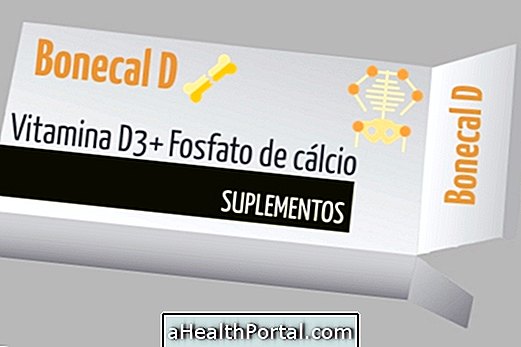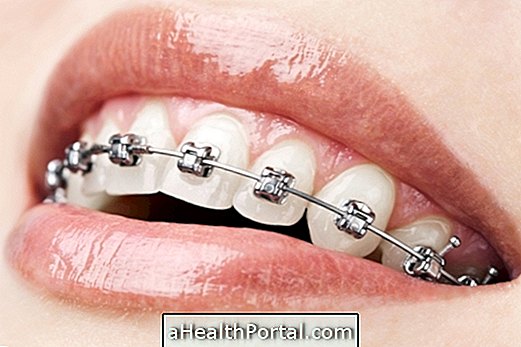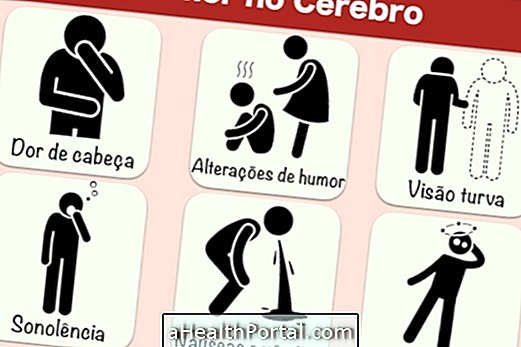Ondansetron is the active substance in an antiemetic medicine known commercially as Vonau. This medicine for oral and injectable use is indicated for the treatment and prevention of nausea and vomiting, since its action blocks the reflex of the vomit, reducing the sensation of nausea.

What is it for
Vonau flash is available as 4 mg and 8 mg tablets, which contain ondansetron which acts to prevent and treat nausea and vomiting in adults and children over 2 years of age.
Vonau Injection is available in the same doses of ondansetron and is indicated for the control of nausea and vomiting induced by chemotherapy and radiotherapy in adults and children from 6 months of age. In addition, it is also indicated for the prevention and treatment of postoperative nausea and vomiting in adults and children from 1 month of age.
How to take
1. Vonau Flash Oral Disintegration Tablets
The tablet should be removed from the pack and placed immediately on the tip of the tongue so that it dissolves in seconds and is swallowed, and it is not necessary to take the medicine with liquids.
Prevention of nausea and vomiting in general:
Adults: The recommended dose is 2 8 mg tablets.
Children older than 11 years: The recommended dose is 1 to 2 4 mg tablets.
Children aged 2 to 11 years: The recommended dose is 1 tablet of 4 mg.
Prevention of postoperative nausea and vomiting:
The dose to be used should be as described above for each age and should be taken 1 h prior to induction of anesthesia.
Prevention of nausea and vomiting in general associated with chemotherapy:
In cases of chemotherapy that causes severe vomiting the recommended dose is 24 mg Vonau in a single dose, which is equivalent to 3 8 mg tablets, 30 minutes before the start of chemotherapy.
In cases of chemotherapy that causes moderate vomiting, the recommended dose is 8 mg of ondansetron, twice daily at which the first dose should be administered 30 minutes before chemotherapy, and the second dose should be administered 8 hours later.
For one to two days after the end of chemotherapy, it is recommended to take 8 mg ondansetron, 2 times a day every 12 hours.
For children 11 years of age and older, the same proposed dose is recommended for adults and for children 2 to 11 years old 4 mg ondansetron is recommended 3 times daily for 1 or 2 days after end of chemotherapy.
Prevention of nausea and vomiting associated with radiation therapy:
For total body irradiation the recommended dose is 8 mg ondansetron, 1 to 2 hours before each fraction of radiotherapy applied each day.
For single dose high dose radiotherapy the recommended dose is 8 mg ondansetron, 1 to 2 hours prior to radiotherapy, with subsequent doses every 8 hours after the first dose for 1 to 2 days after the end of radiotherapy.
For radiotherapy of the abdomen in fractionated daily doses, the recommended dose is 8 mg ondansetron, 1 to 2 hours before radiotherapy, with subsequent doses every 8 hours after the first dose, with each day of radiotherapy application.
For children 2 to 11 years of age, 4 mg ondansetron dose is recommended 3 times daily. The former should be administered 1 to 2 hours before radiotherapy begins, with subsequent doses every 8 hours after the first dose. It is recommended to administer 4 mg of ondansetron 3 times daily for 1 to 2 days after radiotherapy has stopped.
2. Vonau injectable
Vonau should be administered by a health care professional and selection of the dose regimen should be determined by the severity of nausea and vomiting.
Adults: The recommended intravenous or intramuscular dose is 8 mg given immediately prior to treatment.
Children and adolescents 6 months to 17 years of age: The dose in cases of nausea and vomiting induced by chemotherapy can be calculated based on body surface area or weight.
This dose may be changed by your doctor depending on the severity of the condition.
Who should not use
This medicinal product should not be used by people who are allergic to the active substance or to any of the ingredients contained in the formula, in pregnant or breast-feeding women, and in children under 2 years of age.
Avoid ondansetron in patients with congenital long QT syndrome and use caution in people with kidney or liver problems. In addition, Vonau whose presentation is in tablets should be used with caution in phenylketonuric due to the excipients contained in the formula.
Possible side effects
1. Voanu flash tablets
The most common side effects that occur with the use of Vonau flash tablets are diarrhea, constipation, headache, and tiredness.
In addition and less frequently, malaise and wounds may also occur. If you experience symptoms such as restlessness, agitation, redness of the face, palpitations, itching, pulsation in the ear, coughing, sneezing, difficulty breathing within the first 15 minutes of administering the medicine, seek medical advice as a matter of urgency.
2. Vonau injectable
The most common side effects that can occur with the use of Vonau injectable are sensation of warmth or flushing, constipation and reactions at the site of intravenous injection.
Seizures, movement disorders, arrhythmias, chest pain, decreased heart rate, hypotension, hiccups, asymptomatic increase in liver function tests, allergic reactions, dizziness, visual disturbances, QT prolongation, transient blindness, and rash.




















